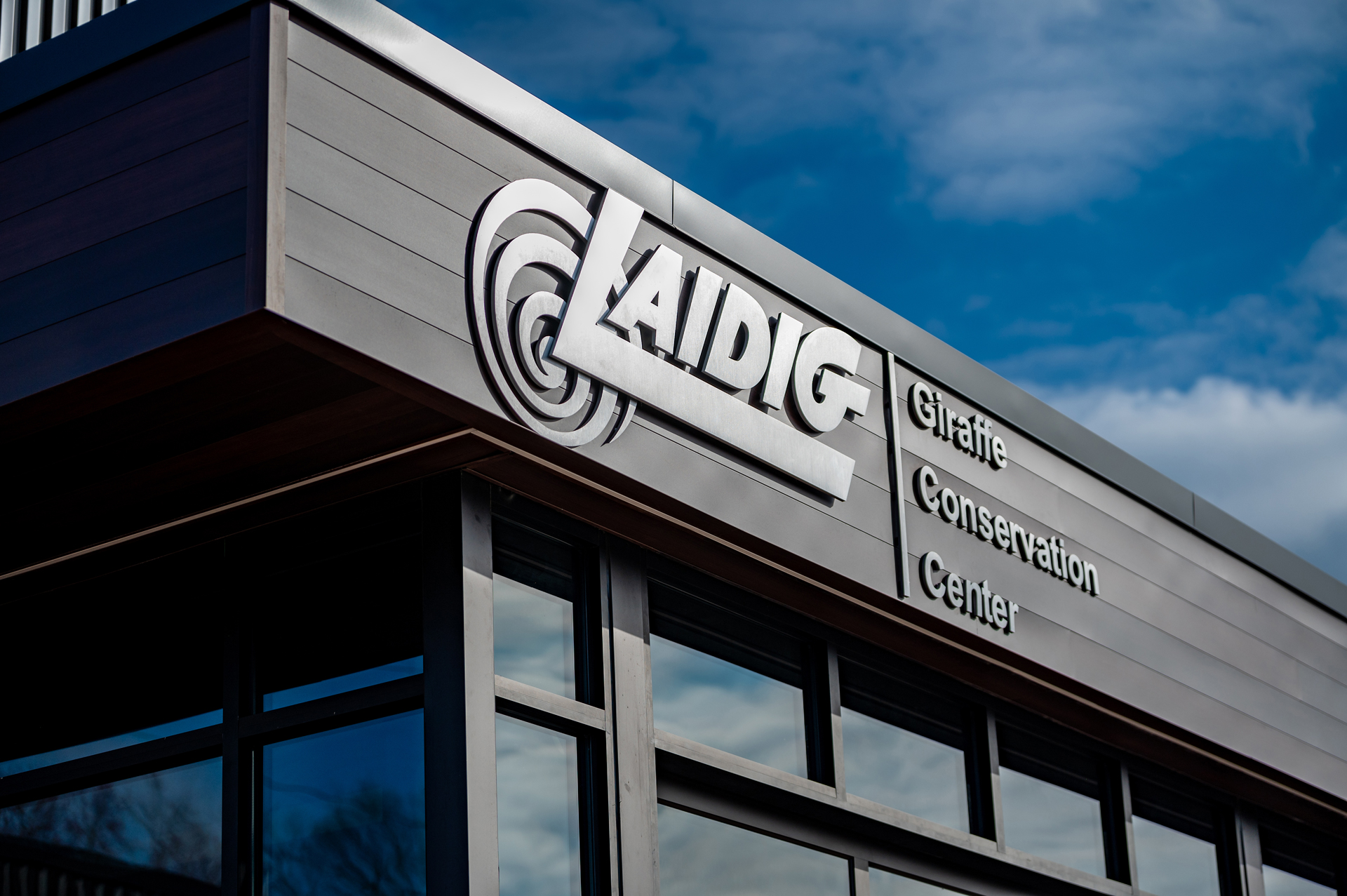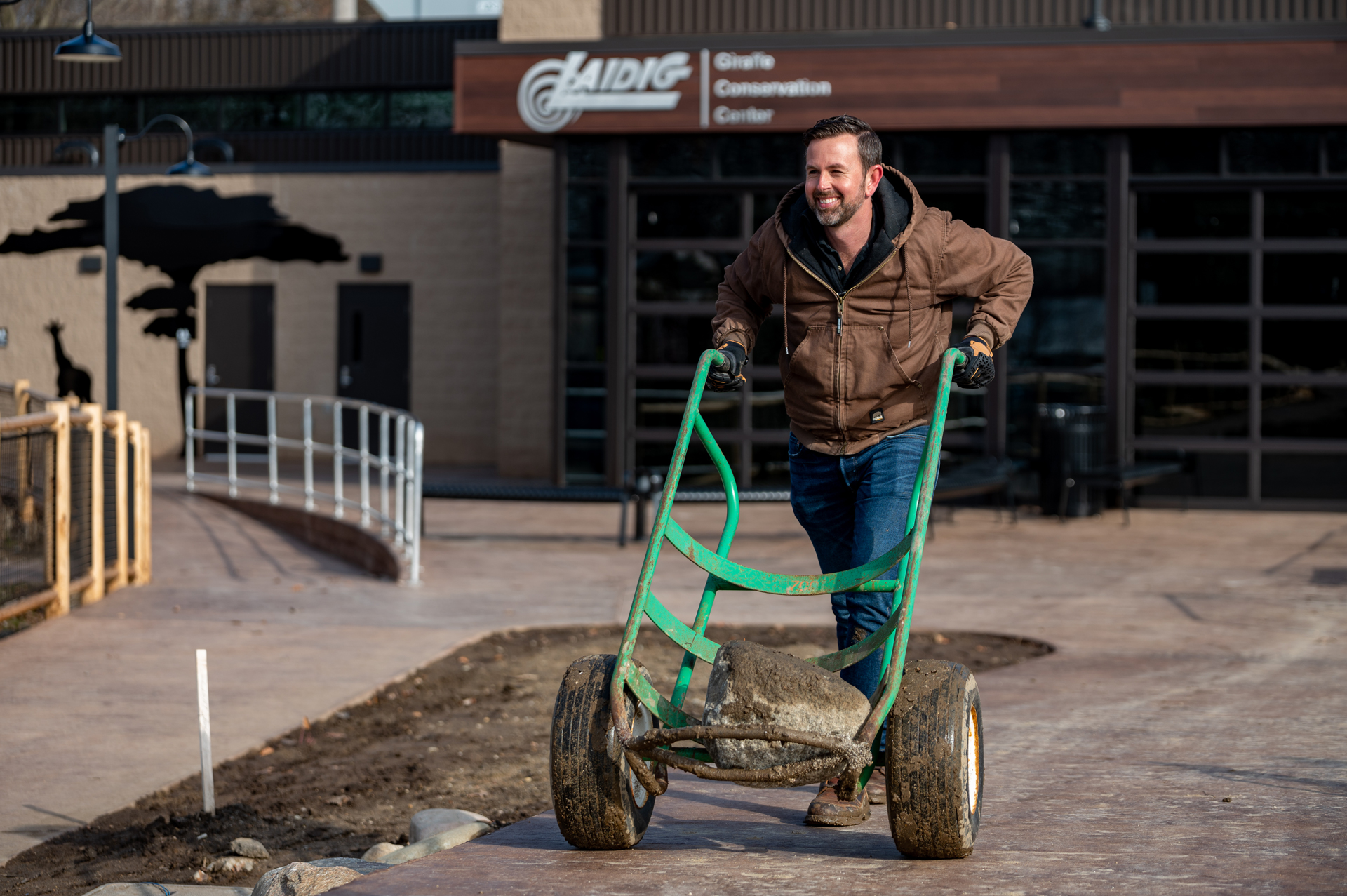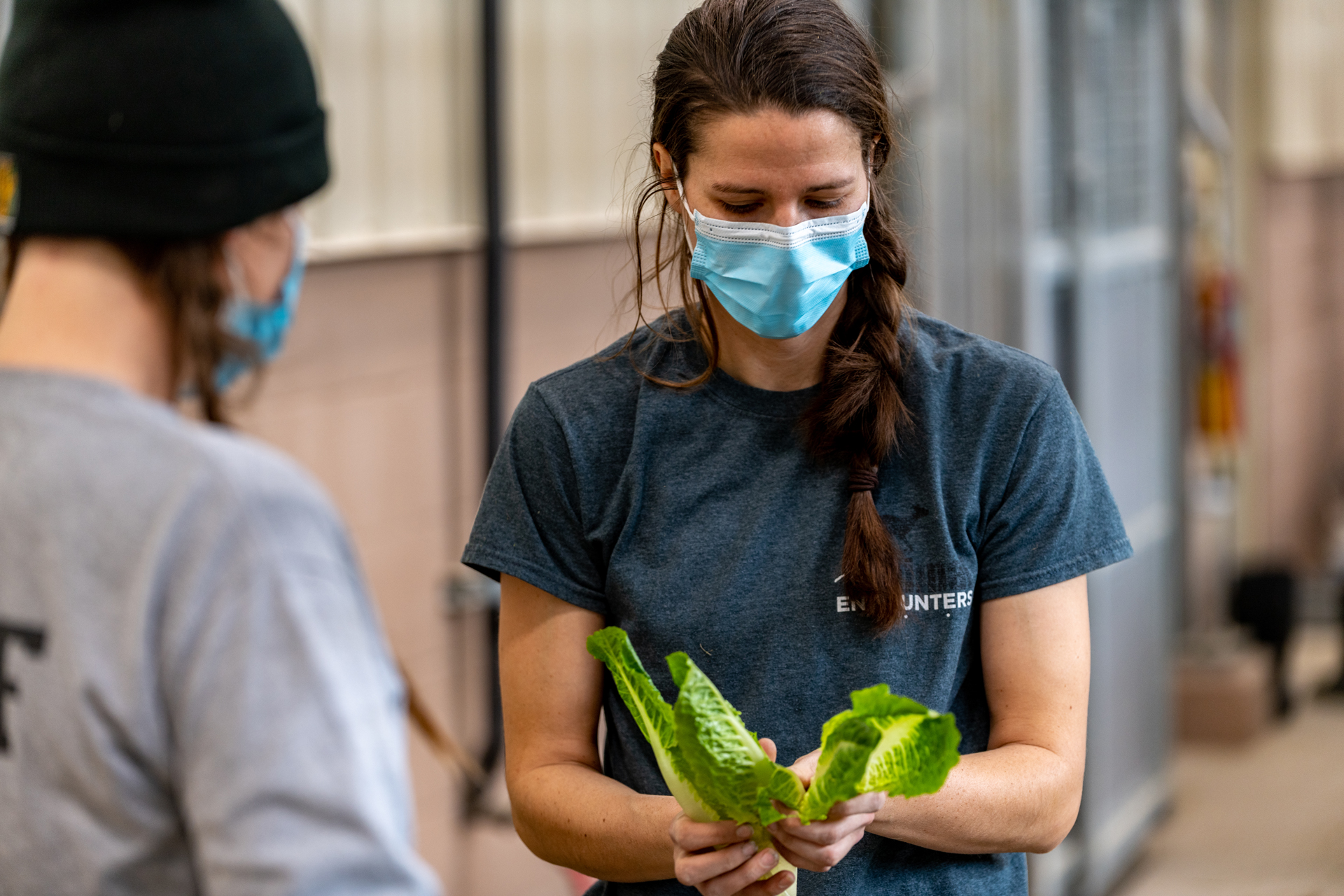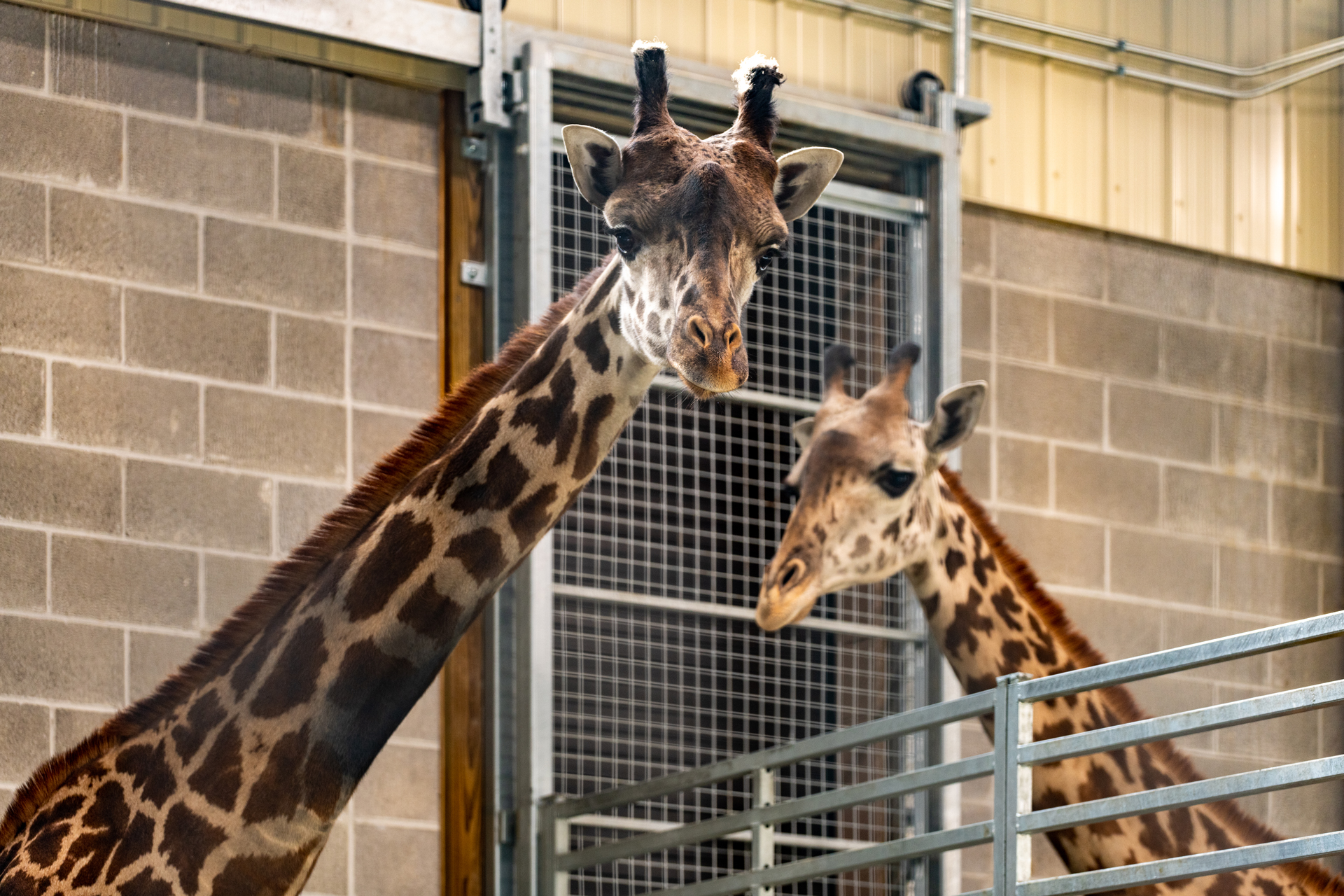Story by Jessica Spoor
As I walk into the zoo’s side entrance I feel like a VIP, not a soul around. The popular destination is just shy of opening for their season and it’s almost as if I’m in a different time zone. The usual suspects of noise and disorder are all void of sight and the only sound I hear is coming from the welder just outside the giraffe quarters. They’re putting the finishing touches on what will be the platform to feed the newest stars of the zoo.
The four stunning Masai giraffes, ranging from 15 to 17 feet tall, can be seen through their barn enclosure looking skeptical as I walk in with Potawatomi Zoo’s Executive Director, Josh Sisk. Their stature is purely breathtaking when seen from a short distance – they tower with elegance, moving in near silence. The four males (known as Seymour, Maximus, Wyatt and Kellan) and their arrival to the zoo is the first of many new additions to make waves.
Their new home, the Laidig Giraffe Conservation Center, is a stunning new $2.6M facility, hosting expansive indoor quarters for the giraffes, additional quarters for (what will be) the ostriches and a small event space in the front. It’s tastefully modern, matching the look and feel of the brand-new front entrance.
It’s been a dream in the making for Sisk.
When we sit down to talk, it’s in their brand-new office space housed in the renovated red barn. Formerly a house for livestock, the barn has seen a complete transformation just as many other areas of the zoo have in recent times. Before we even begin, I can tell his excitement for the job is contagious – and his knowledge of the industry is far more than one would imagine.
Rightfully so. Sisk spent over 12 years in the LA Zoo as a Giraffe Keeper and Mammal Curator and from there, a stint at the world-renowned Bronx Zoo.
“He’s not above any job. If there’s a job that needs to be done, you’ll find him doing it,” said Marketing Manager Kristina Barroso Burrell. “He mows, he cleans up trash, he leaf blows…”
“The leaf blower is my therapy,” he interrupted with a laugh. “It all adds up and is something that’s instilled in me. It all matters.”
On any given day, you’ll find Sisk helping at animal care, designing a new exhibit, creating a presentation for a board meeting, or stopping by the local hardware store picking up supplies for his next project. It’s that servant leadership mixed with a greater vision that has seen successes year after year. The introduction of the giraffes is yet another example of the big vision.
Masked up and more eager than my three-year-old, I’m coached to move slowly as the keepers take lead on encouraging the stunning animals forward with fresh lettuce leaves. The enclosure is warm, and I can only imagine how refreshing the warm sun feels after acclimating in their new quarters this past winter.
That acclimation period was an extremely important time for keepers to earn their trust. Visitors have been few and far between since their arrival, and they aren’t convinced I’m any different today.
It’s not every day giraffes are being transported across the Midwest. In fact, there are only two haulers in the country who can accommodate the journey with a modified horse trailer. It took four trips from Florida and Greenville, South Carolina – the locations of the AZA- accredited zoos where these four giraffes originate from.
The Masai giraffes who are native to East Africa, are also considered endangered, which is why this is an important process for Potawatomi Zoo. South Bend is the only zoo to have the Masai giraffe in the tri-state area and taking on more is in the works for the future.
“Through AZA-accredited zoos, we don’t buy and sell animals,” said Sisk. “It’s all about sustainability. There are population biologists with massive databases – almost like a dating app – that tell us bloodlines and lineages…it was important [for us] to take on the males, because it allows other zoos to have space to continue to breed and grow the species.”
As I stand and gaze at the tall mammals, I’m eager to have the opportunity to see behind-the scenes of such intriguing creatures for the first time.
It’s one of the many things Sisk is intentional about doing, setting himself apart from the typical zoo director role. He’s been unafraid of taking the public on a behind-the-scenes tour on the morning news or sharing how the keepers care for animals during a Facebook Live session.
“We’re finding the more we provide that access to people – like how the animals are cared for – and being an open book about it, the more support we get from the community,” he said. “At the end of the day, that’s what it’s all about.”
That open book mentality is due in part to the overwhelming passion for the industry, which is evident from the moment you meet him. Sisk isn’t here for a business-as-usual experience. He’s been shaking up the zoo’s excitement factor since his 2019 appointment.
Most recently stirring eager zoo goers with the “Big and Loud” campaign, one that will see additions of new species and development of additional habitats to the tune of $6.2M – the largest investment to date. It’s been the most successful campaign the Zoo has ever seen with the majority funded by private donors, but it began with Sisk’s imagination for what could be and someone to align with his vision.
“I was standing in the African Savannah area with the Laidig family and laid out my dream for it someday. He turned to me and asked, ‘How much would you need to get started?’ I jokingly answered with 1.5 million,” he says, getting emotional.
“Right there, standing at the fence he goes ‘Ok. I think we can do that.’ I remember my stomach sinking thinking, are you serious?”
Turns out, he was very serious.
From that moment on, Sisk sat down with architects to begin designing his dream from scratch. To see it come to fruition over the last two years has become an incredible journey for Sisk and his team. But at the end of the day, it’s not just about the giraffes.
“We’re reshaping this core part of the zoo to bring in animals that people love,” said Sisk. “…it’s putting in these state-of-the-art facilities and bringing an immersive experience to the community.”
As the zoo continues to grow and thrive in our community, it’s no surprise that equity is front-of-mind. The industry nationwide has a history of not being as diverse as it could be, but here at home Sisk and his team are intentional about tackling the disparity through new partnerships, discounts, and unique opportunities for kids.
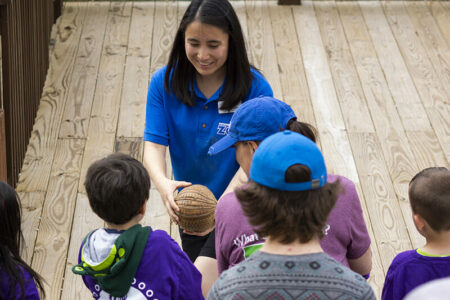 “We’re working on fostering the connection with wildlife and those who may not otherwise be exposed to it,” he said. “It’s getting animals in the hands of kids and letting them experience it at a young age. Getting those kids who may not have thought about a career in zookeeping to think about it is something we’re always working on.”
“We’re working on fostering the connection with wildlife and those who may not otherwise be exposed to it,” he said. “It’s getting animals in the hands of kids and letting them experience it at a young age. Getting those kids who may not have thought about a career in zookeeping to think about it is something we’re always working on.”
With the zoo continuing to undergo additional exhibit changes and welcoming new animals within the next few years, their ultimate goal is to remain a community zoo.
As I walk back to the main gates after our quick behind-the-scenes encounter, I am at awe at what this community zoo continues to do for our city. It’s the passion and commitment from Sisk and the zoo staff who working tirelessly day and night that make it something special.
“We’re building something really great here and that’s what keeps me motivated.”

